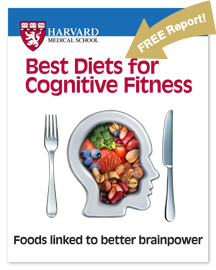A sluggish, unsteady walk might signal memory problems

Is there a spring in your step—or a wobble in your walk? The speed and stability of your stride could offer important clues about the state of your brain’s health. According to new research, an unsteady gait is one early warning sign that you might be headed for memory problems down the road.
A group of studies reported last week at the Alzheimer’s Association International Conference in Vancouver, Canada, revealed a strong link between walking ability and mental function. What’s behind this connection? Walking is a complex task that requires more than just moving the leg muscles. Walking requires scanning the environment for obstacles and safely navigating around them, all while talking and carrying out various other tasks, explains Dr. Jeffrey Hausdorff, a lecturer in medicine at Harvard Medical School and a professor at Tel-Aviv Medical Center who has spent the last decade researching the relationship between walking and cognitive function.
Young people, who are naturally endowed with strong motor and mental function, can easily handle the multitasking that walking requires. For older people, it takes extra thought to put one foot in front of the other. “With aging, gait becomes less automated and cognitive resources are called into play to compensate,” Dr. Hausdorff says. If those resources are already in short supply because of cognitive decline or dementia, walking speed and stability will suffer.
What your walk says about your mental function
The link between cognitive function and walking isn’t a new finding—researchers have been investigating it for the past 10 years or so. “What’s exciting about this research is that they’re taking it to the next level,” Dr. Hausdorff says. “They showed that specific aspects of gait were related to specific aspects of cognitive decline.”
For example, the studies found that:
- Walking rhythm was related to information processing speed.
- Walking variations and speed were associated with executive function (the mental processes we use to plan and organize).
- Walking speed became significantly slower as mental decline grew more severe.
Walking tests offer window into mental ability and overall health
These studies suggest that walking tests could be an easy way to evaluate older adults for the early signs of dementia—and possibly other health conditions, as well. “Gait speed is a very simple measure to obtain, and it has been correlated with many important outcomes,” Dr. Hausdorff says.
A study in JAMA, for example, suggested that walking speed might predict survival in older adults, because it reflects the health of the heart, lungs, muscles, nerves, and other vital organs. As Dr. Howard LeWine wrote in this blog last week, a new study published in the Archives of Internal Medicine found that walking speed might help pinpoint which seniors are at greatest risk from the side effects of high blood pressure. Walking tests can also predict fall risk. “This is one of the holy grails for geriatricians, because falls have a huge impact on the well-being of older adults and on the health care system,” Dr. Hausdorff says.
All of this work illustrates why it’s important to be on the alert for gait changes. However, an unsteady or slow walk alone doesn’t prove that you’re destined for dementia. “There are many reasons why the gait can change,” says Dr. John Stakes, a neurologist at Harvard-affiliated Massachusetts General Hospital. He says ailments ranging from a neck problem to a vitamin B12 deficiency could make you less stable on your feet. “It’s worthwhile to see a neurologist to find out why the gait has changed, but I would not say that it locks them into a diagnosis of Alzheimer’s.”
If you are dealing with the early stages of memory loss, don’t think of it as an inevitable, untreatable consequence of aging. Try mnemonic devices and other memory techniques that can help improve your ability to remember. A variety of treatment approaches ranging from aerobic exercise, to dedicated computer “games” and gait training in virtual reality, appear to be effective at improving both gait and cognitive function in older adults, Dr. Hausdorff says.
About the Author

Stephanie Watson, Former Executive Editor, Harvard Women's Health Watch
Disclaimer:
As a service to our readers, Harvard Health Publishing provides access to our library of archived content. Please note the date of last review or update on all articles.
No content on this site, regardless of date, should ever be used as a substitute for direct medical advice from your doctor or other qualified clinician.















